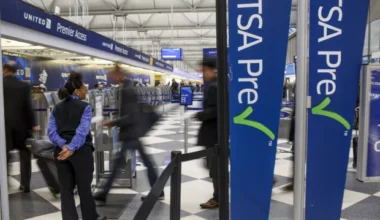An impressive team of former airline executives and entrepreneurs have announced plans for a budget airline called Air Haifa, and I just don’t understand how it will be viable. Among other things that confuse me about the new company are the obvious limitations caused by Haifa Airport’s extremely short runway and the demand (or lack thereof) for a new budget airline.
Overview
True to its name, Air Haifa will be based out of Haifa Airport (HFA). Interestingly, Haifa Airport has just one runway that measures just 4,324 feet long, much shorter than the minimum takeoff distance of a Boeing 737 and of the smallest variant of the Airbus A220.
According to the airline, Air Haifa’s strategy involves the use of smaller planes to serve routes such as Eilat and Bucharest in the current year, with plans for expansion into other European destinations in the pipeline.
Founders
Nir Zuk, the billionaire founder of the cybersecurity giant Palo Alto Networks, is the leading investor and co-founder of the venture alongside a trio of other founders. These include the ex-CEO of El Al Gonen Usishkin, another ex-CEO of El AL named Miki Strassburger, and Lior Yavor, ex-El Al Chief Pilot and VP of Operations.
I’m confused
Two things strike me as really weird about this announcement.
First, why on earth would someone choose to base an airline out of an airport with 4,324 foot-long runway? As far as I know, that’s shorter than the minimum takeoff distance for every commercial jet currently in operation. It’s even too short for a lot of turboprops, including the popular ATR-72-600. Apparently, the airport plans to extend the runway by 1,037 feet sometime over the next several years, but that still wouldn’t make it long enough for anything but turboprops.
All this is to say that Air Haifa’s choice to operate out of HFA means they’ve limited themselves to using turboprop aircraft. If they only planned to fly to other cities in Israel, that would make sense but given their ambition to fly to European destinations and the very limited range of turboprops, it’s a strange choice. Also, keep in mind that Air Haifa is intended to be a budget airline, and turboprops tend to be much more expensive to run per seat than jets.
Second, it’s hard to imagine there’s enough demand to justify this airline. Haifa itself is a city with a population of around 300,000 people and those residents only need to drive about an hour south to get to Israel’s primary airport, Ben Gurion.
On top of this, Israel already has two budget airlines with nearly identical business models, Arkia and Israir, and a handful of other charter options. For a country with a population slightly smaller than that of Michigan, it’s hard for me to believe there’s an unserved market here.
Conclusion
The launch of Air Haifa by a group of experienced aviation executives and entrepreneurs is somewhat mystifying. The choice of Haifa Airport as the base, with its short runway, raises questions about the types of aircraft the airline can feasibly operate, particularly in light of its European ambitions. The need for another budget airline in a market where other budget options like Arkia and Israir already exist, as well as Haifa’s close proximity to Ben Gurion further add to the curiosity.
As the plans for Air Haifa unfold, I’ll be watching closely to see how the airline navigates these challenges and whether it carves out a niche. To be honest, the pedigree of the founders makes me think I’m missing something here, but I can’t figure out exactly what that is…







2 comments
Ben Gurion is at max capacity so there is definetly a lot of demand for international flights from an alternative airport. The only reason it hasn’t happened yet is because there is no suitable alternative.
Interesting, did not know that TLV was at max capacity already.